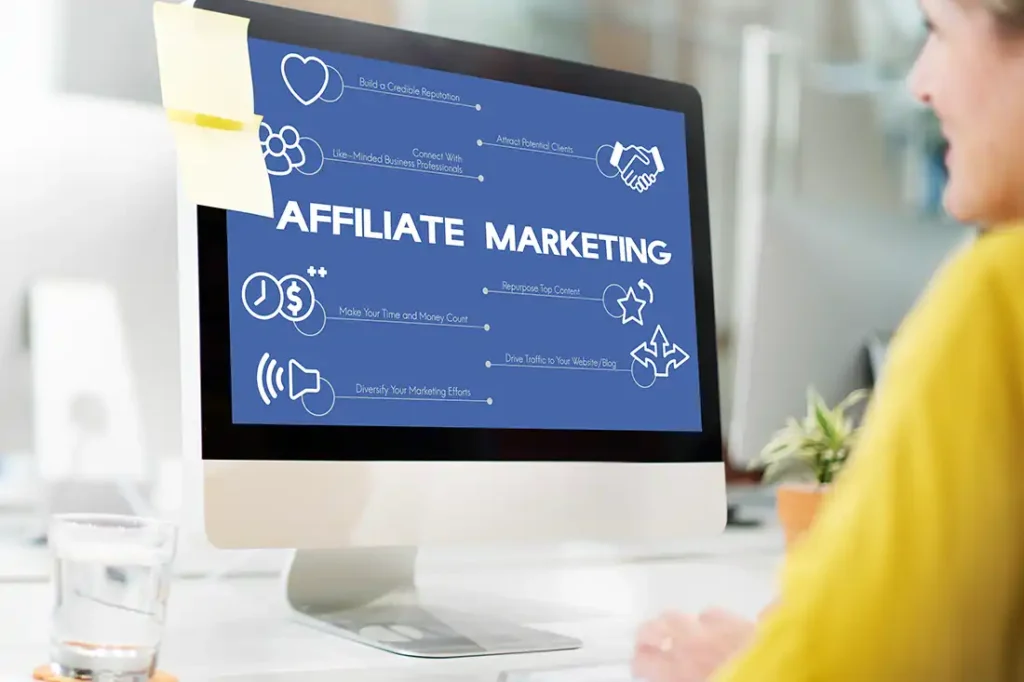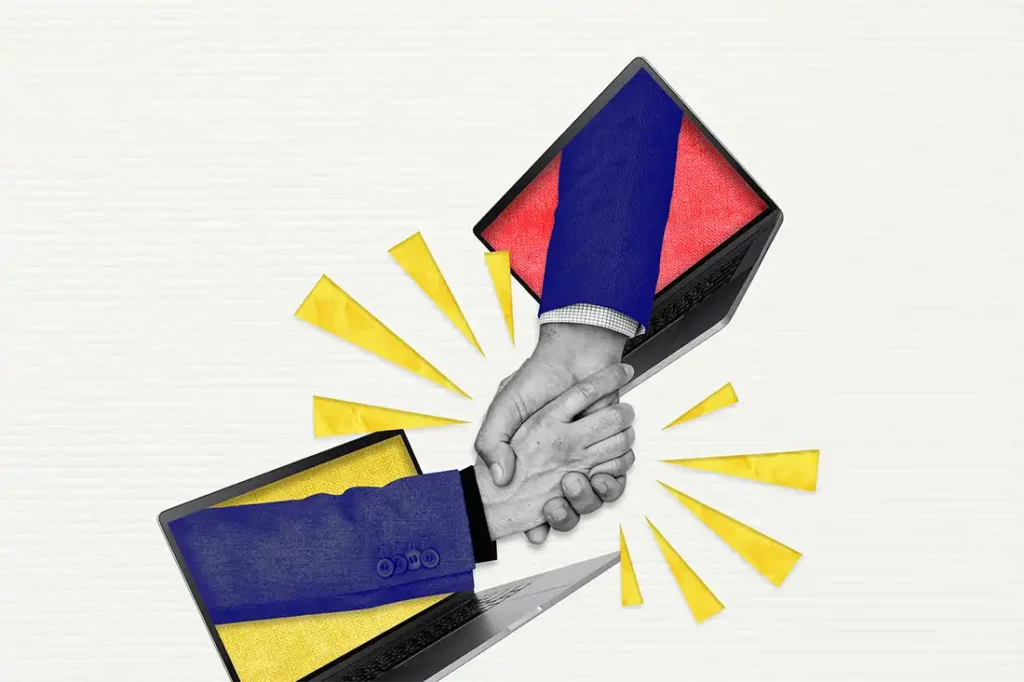Affiliate marketing now delivers 12-15x ROI compared to traditional advertising’s 3-8x returns. Companies using the right affiliate strategies are cutting lead costs by 60% while getting higher-quality prospects.

Here’s what’s happening right now.
Your traditional advertising costs keep climbing. Facebook ads that used to cost $2 per click now cost $4. Google Ads are even worse.
Meanwhile, your conversion rates stay flat. Or worse – they’re dropping.
You’re spending more money to get fewer qualified leads. Sound familiar?

Think of it this way: Instead of paying for ads that might work, you pay partners only when they deliver actual leads.
Affiliate lead generation connects you with people who already have audiences. These partners promote your business to their followers. When someone shows real interest and gives you their contact info, your partner gets paid.
It’s that simple.
Here’s why this works so well: Your partners only get paid for results. No results, no payment. This keeps everyone focused on quality over quantity.
In 2025, lead generation affiliate programs offer some of the highest payouts in affiliate marketing. We’re talking $500-$2,000+ per qualified lead in high-value industries.

People trust recommendations from sources they already follow. When a blogger or YouTuber they like recommends your service, that carries weight.
Way more weight than your Facebook ad.
This trust translates into higher conversion rates. Our data shows leads from content creators convert 3x better than cold traffic from ads.
The best affiliate partners understand your target audience. They’re not just throwing your link everywhere hoping something sticks.
They create content specifically for people who need your solution. They answer questions. They solve problems. They build relationships.
When someone clicks through and gives you their contact info, they’re genuinely interested. Not just clicking out of curiosity.
This is the biggest advantage. With affiliate marketing, you set a price per qualified lead. Your partners only get paid when they deliver.
Compare this to Google Ads where you pay $66.69 per lead on average (whether they convert or not). Or Facebook Ads at $21.98 per lead.
With affiliates, you pay $0 unless someone actually wants to talk to you.
Each affiliate partner brings their own audience. You’re essentially getting access to dozens or hundreds of audiences without building them yourself.
And since you’re only paying for results, there’s no upfront risk. If a partner’s audience doesn’t convert, you don’t pay.
Affiliate partners usually focus on specific niches. The fitness blogger’s audience wants fitness solutions. The business coach’s followers need business tools.
This natural targeting means higher-quality leads and better conversion rates.

These are your heavy hitters. Content creators build deep relationships with their audiences through valuable, consistent content.
A well-written blog post or detailed YouTube review can generate leads for months. Sometimes years.
What to look for: Creators with 10,000-100,000 engaged followers often perform better than mega-influencers. Their audiences trust them more and engagement rates are higher (7-20% vs 3-5%).
Instagram, TikTok, and LinkedIn influencers can drive massive awareness fast. But choose carefully.
TikTok now delivers 5.2% affiliate link engagement rates – that’s 160% higher than Instagram’s 2.0%. The platform’s shopping integration has over 100,000 creators in affiliate programs.
Pro tip: Micro-influencers (10K-100K followers) deliver 4.7x higher conversion rates than macro-influencers. They cost less and their audiences are more engaged.
Email still delivers some of the highest ROI in marketing. Partners with targeted email lists can be goldmines for lead generation.
Email campaigns through affiliate partnerships generate 40% higher conversion rates compared to other digital channels. The key is finding partners whose lists match your ideal customer profile.

Not all affiliate networks are created equal. Here’s what’s working in 2025:
Impact.com dominates with 85.1% agency usage. Their tracking technology is solid and they have the most partners.
ShareASale maintains 20.93% market share and works great for smaller businesses. Easy to use and affordable.
CJ Affiliate serves enterprise clients. More complex but powerful for larger campaigns.
PartnerStack focuses on B2B and SaaS. Perfect if you’re in those markets.
Pick 2-3 networks that serve your industry. Don’t try to be everywhere at once.
Track these metrics religiously:
Mobile is crucial: 62% of affiliate traffic now comes from mobile. Make sure your signup process works perfectly on phones.
Set up proper tracking from day one. You can’t optimize what you can’t measure.
This can’t be overstated. Mobile commerce will represent 72.9% of total e-commerce sales by 2025.
Mobile users have 33% higher purchase intent than desktop users. But only if your mobile experience is smooth.
Quick wins:
Commission rates vary by industry:
Hybrid models work best: 54% of creators prefer hybrid compensation (base fee + commission) over commission-only deals. This attracts better partners and improves performance.
Top-performing affiliates want custom landing pages and promotional materials. These co-branded pages increase conversion rates 2-3x.
Give your best partners:

78% of affiliate marketers now use AI-driven content creation tools. Those using AI report 65% better campaign performance.
AI tools to consider:
Last-click attribution is dead. Multi-touch attribution usage is projected to rise 35% as businesses realize they need the full customer journey picture.
Essential tracking features:
Connect your affiliate platform to your CRM. Salesforce Einstein and HubSpot’s AI lead scoring now update every 10 days, giving you real-time insights.
This connection lets you track the complete customer journey and optimize for lifetime value, not just initial conversions.


Target these benchmarks:
Budget allocation that works:
Affiliate marketing isn’t a magic bullet. It takes time to find the right partners and optimize your campaigns.
But when done right, it’s the most cost-effective way to generate high-quality leads at scale.
The businesses that master affiliate lead generation in 2025 will have a massive competitive advantage. While their competitors burn cash on expensive ads, they’ll be building a network of partners who generate leads 24/7.
Start today. Start small. But start.
The affiliate marketing opportunity is $37.3 billion globally and growing. Your competitors are already figuring this out.
Don’t get left behind.
It depends on your industry and customer lifetime value. SaaS companies typically pay $200-$1,000+ per qualified lead. Start with 20-30% of your first-year customer value.
Start with affiliate networks like Impact.com or ShareASale. Look for partners who already serve your target audience. Check their content quality and engagement rates before partnering.
Focusing only on big influencers. Micro-influencers (10K-100K followers) often deliver better ROI and higher conversion rates than macro-influencers.
Expect 60-90 days to see meaningful results. The first 30 days are about setup and partner recruitment. Real momentum builds in months 2-3.
Absolutely. Since you only pay for results, there’s minimal financial risk. Many small businesses see their best ROI from affiliate programs once they’re properly set up.